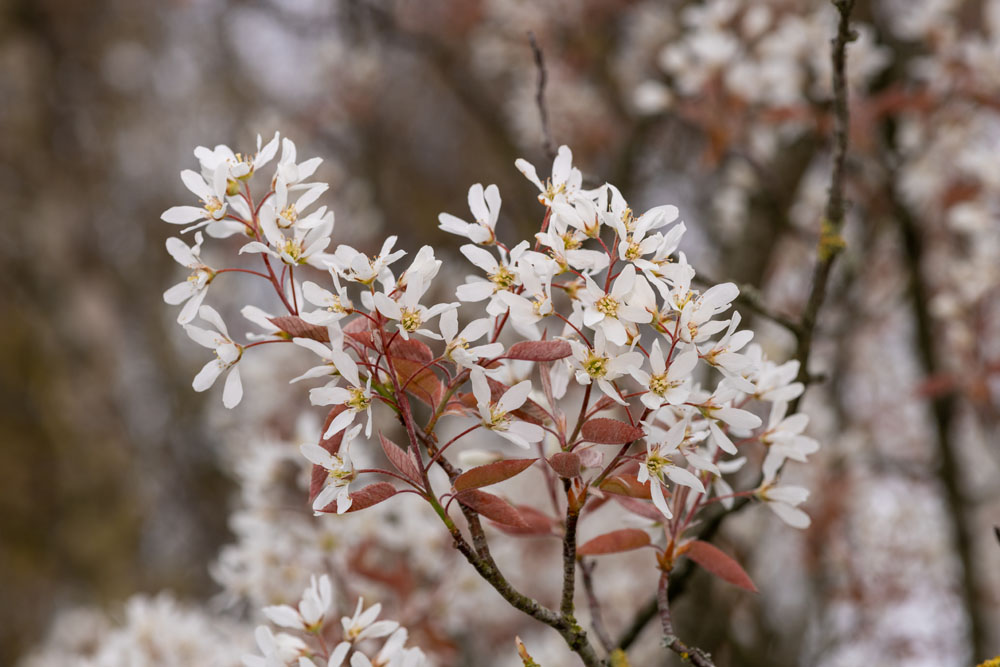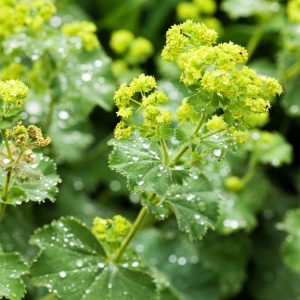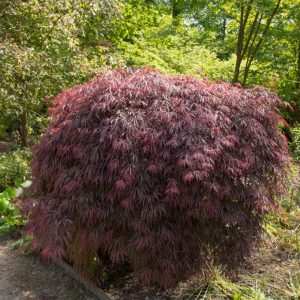Description
Amelanchier – Seviceberry – Shadbush – Juneberry – Snowy Mespilus
There are about 30 species from moist woodland and stream banks in Europe, Asia, and North America are deciduous single or multi stem upright shrubs and small trees growing 20-30 feet tall, in this genus. There prized for their clouds of short displays of white sprays, of 5 petaled ½-3/4” across, star shaped flowers that bloom from early spring to mid spring. Flowers appear along with the simple oval leaves that have a downy underside. Leaves have finely toothed edges, which open silver or bronze and develop brilliant autumn color. They also bear spherical or pear shaped green, or maroon, or purple fruit ripening to purple or brown or black, which are edible and attracts birds.
Some species do well in acidic boggy ground or by the side of a pond. Most prefer moist shelter sites under other trees but with ample light.
This species is prone fire blight, and variety of fungal leaf spots, Gymnosporangium rust, powdery mildew, dieback, and cankers caused by many different fungi occur.
Amelanchier laevis – Allegheny serviceberry – Sarvis tree – This spreading shrubby tree grows 25’ feet tall and in breadth naturally occurring Appalachian Mountains extending into Canada in sheltered slopes and in ravines. Its egg shape 1-2” long leaves first emerge bronzy purple, which are slightly downy maturing to hairless mid green. Leaves emerge along with the flowers, which are held in pendent racemes, 1 ½-5” long consisting of fragrant white flowers. Flowers are followed by sweet juicy ½” long blue-black fruit used in pies and preserves. Autumn color is usually red.
Zones 5-9





